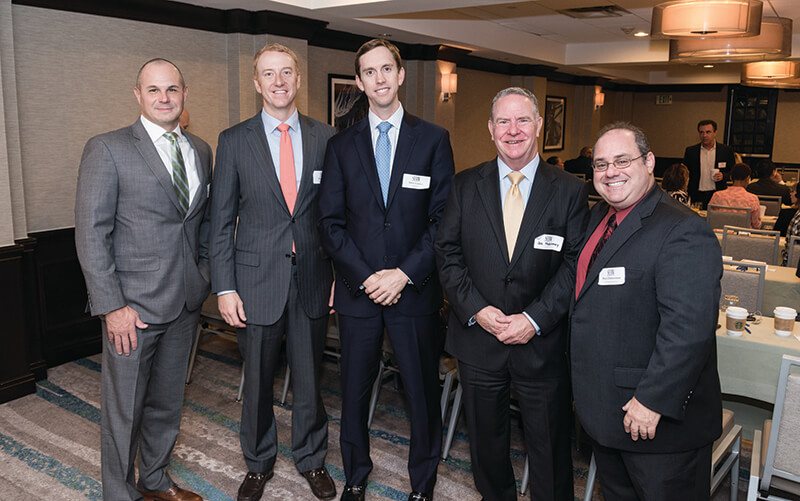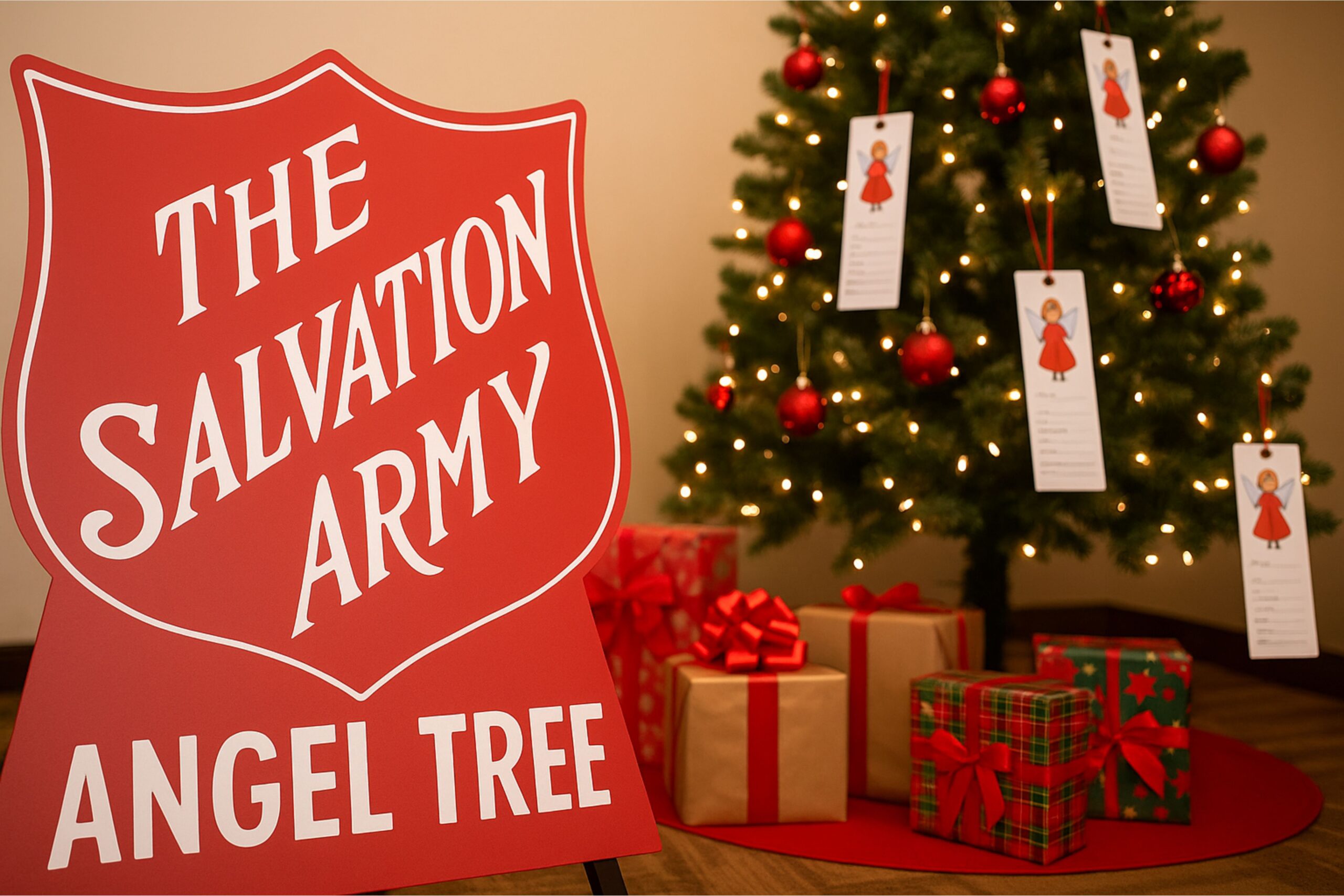An insightful conversation at what motivates and drives today’s workforce
In today’s rapidly changing workplace environment, the multigenerational workforce brings particular challenges for organization’s bottom lines. With digital on the rise, disrupting the way we work and do business, attracting and retaining talent differs from a generational perspective.
Millennials prefer consistent feedback on their performance as opposed to simply an annual review. Baby boomers tend to prefer traditional workspaces, a cubicle with a desk instead of the trendy open-office layouts.
And as the tight labor market and competition for talent increases, understanding how to manage, develop and retain talented workers begins with understanding each generation’s expectations and motivations. To dive into such insight, SFBW hosted its “Better Bottom Line” breakfast with four top area experts. Gary Press, chairman and CEO of SFBW, moderated the event at the Westin Fort Lauderdale.
The panelists:
• Rachel Sapoznik, CEO of Sapoznik Insurance
• Marc Zimmerman, vice president of retirement
plan consulting of the Centurion Group
• Stephen Garber, CEO of Third Level
• Melissa Aguilar, director of recruiting at MassMutual
The following are takeaways from Better Bottom Line. Responses have been edited for brevity and clarity.
Employers are struggling to balance the different needs and working styles of three distinct generations in the workforce. What do you see as the common ground and what are the differences?
Sapoznik: The common ground with all the generations—baby boomers, Generation X, millennials—is family values. Across each generation, they want to be able to balance their work with their family, but they do it differently. Another part, which is extremely important for all of us, is respect. Respecting each generation’s work style and those differences. They also need leadership. Leadership must be someone that they can trust and embrace their style and understand how to work with them. And finally, training. To understand what they need to do, how they need to do it and what the expectations are.
How does each generation view financial-wellness programs, and what is the most important feature for each?
Zimmerman: Financial wellness is a relatively new term, as opposed to wellness programs on the health side. Employees are just starting to understand that these programs exist.
As you get through all the plans’ design, whether it is auto-enrollment or auto-increase, you have to think, “What is the next level? How do we separate ourselves from the competition when we are hiring and retaining our employees? What is financial wellness?” It’s not retirement readiness, like most people think. “How do I get to the end goal?” It’s everything else in between. You have your 20-somethings, 30s, 40s, 50-somethings and 60-somethings. And they all react differently to the type of information you are giving them.
Then you need to think about the best way to communicate it to your employees. Providers in the 401(k) world are doing it through print and the web, which are two mediums to do it.
What we see from 20s, 30s and 40-somethings—and you might think the 20-somethings only want information web-based—but, in actuality, the results from the survey say that after they research it online and educate themselves on the topic, that’s when they want to talk to somebody personally. When it comes to financial wellness, people still want to talk to people.
There are 14 different outsourced financial wellness programs out there, currently in existence. The best one is the one that partners with a one-on-one financial coach.
Millennials, they like to research first and then they like to talk.
Generation X, they are more hands-on. The biggest worry they have isn’t retirement, but their emergency savings account. They don’t have it, and that’s what keeps them up at night.
The baby boomers, their biggest issue is: ‘When can I stop working?’ They have a nest egg, but they just don’t know if it is enough.
For plan sponsors, those are your biggest problems as it relates to cost of an employee. Health insurance goes up as they get older as do their salaries. The quicker you can get them to retirement, the better the bottom line of your organization will be. The beauty of it is, the millennials have the advantage of all these new features that are being implemented in the plans, auto-enrollment and auto increases. They didn’t have that 20 years ago.
How do you keep young entrepreneurial minds engaged when they are working in a company that is an established business?
Garber: It’s one of the great challenges that enterprises have today, because large organizations are competing in an open marketplace. They might be competing with an entrepreneurial startup.
One of the things we found in the organizations we are working with, banks aren’t really the creative, “let’s go have fun” kinds of institution. That’s not what they do. That’s not their brand. Yet, in order to be able to compete they have to have a great digital presence and an amazing online capability. So what the great organizations do is that they allow for having a distinction.
For example, over at Lloyds [Bank International], they have a whole building that is called their “Google building,” which looks completely different from the rest of the bank. It is not gray. It is bright colors, and there’s pingpong and pool tables. And as funny as that may sound, it really does make a difference. Yet they still have to have a culture that says “We are the digital bank of the future.” The head of digital told me that he has to remind his digital people about the bank, that they have the bank in their name.
So how do they do that? This is one of the great cross-generational challenges. What Rachel said: Meet people where they are and help them understand you and allow them to really flourish. When we talk about engagement, which is so much an HR challenge, how do we attract and keep talent?
Engagement used to be—and it’s still—extraordinarily important. Tell people what’s expected of them and give them the tools to do their job. Without that, nothing else matters. Yet what really motivates people in today’s world is what I call “the map.” It comes a little bit from author Dan Pink [who writes about work, management and behavioral science]. At the younger ages, people want to feel like they can master something. They want to be encouraged, trained and developed. If you say to them, “Here is what you do, now go do it,” and you put them in a box, you will get a box kind of result. If you can engage, train them and develop them, what you get is hugely powerful.
The “A” is autonomy. Show them trust and let them go forward in an autonomous way. And then, I think the most powerful motivator is purpose. Why? Why do we do this job? Why does this organization exist?
How do you deal with conflicts caused by generational issues?
Aguilar: We like to think that we avoid conflict when we hire people. Our agency is extremely diverse—not just in age, but in culture. That’s another hurdle in the last 10 years we’ve had to overcome. We train everyone, depending on their level of experience, so when somebody comes in—it doesn’t matter if they are a millennial, a baby boomer—we look at them based on what they know about the business. I think that really helps on the training side.
Our business is relationship-based. Everybody has to network. Everybody really has to get to know their clients in order to make a difference.
It starts with the agency. How do we have everyone bond and connect? Within the agency, we do cocktail hours, happy hours. Outside of our office, we created a kickball league that the millennials are really excited about, and they do it on their free time. And the baby boomers go out on Thursday nights to have a couple beers and kick the ball around. Friday morning, we observe that everyone is really friendly at the office, because now they have something in common that’s not work-related.
When we go on trips together, it is extremely important for everybody to make a connection. That helps people do joint business. You have a seasoned agent work with a millennial, and sometimes the seasoned agent knows a little bit less about what is going on. And it is interesting how they don’t see ages, they don’t see generations. They just see what we are working on and want to work together.
Like I said, it starts with the agency and we do that on day one. When we interview someone, we make sure that they are open minded, and they are not stuck in their ways—whether it’s a millennial or a baby boomer.↵











